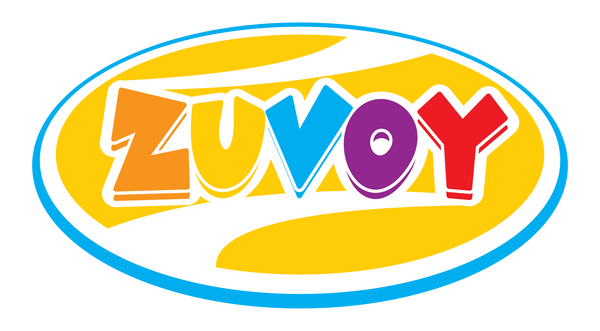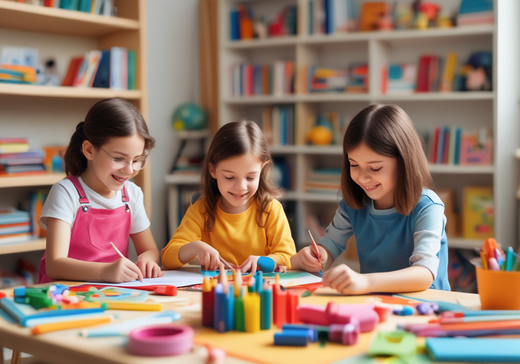Key Highlights
- Fun and learning activities are a great way to make learning fun for kids.
- These activities are different from regular teaching styles. They help kids build important skills while enjoying themselves!
- Learn about the benefits of these activities. They can increase creativity, improve problem-solving, and support social and emotional development.
- Find useful tips for planning and setting up these activities at home. This includes getting the right supplies and making a fun learning area.
- Free your child's love for learning and start a journey of fun discoveries together!
Introduction
Unlock the joy of learning with fun activities that spark your child's curiosity. These activities, such as creating a bingo card, are a great way to teach new words, build general knowledge, and make learning an exciting adventure. Letting kids learn through play helps them understand ideas better and remember information longer.
Understanding Fun and Learn Activities for Kids
Fun and learning activities for kids include many exciting experiences. These activities mix fun with education. They can be things like reading a book together, building a fort in the living room, or doing a science experiment in the kitchen.
The important part is to give kids a chance to explore what they like. They should be able to try new ideas and learn by doing. These tasks fit different ways of learning and help kids grow at their own speed. By combining education with fun, kids will have a good feeling about learning. This way, they are more likely to remember what they learn.
How can fun and educational activities enhance a child's development?
Fun and educational activities enhance a child's development by stimulating creativity, problem-solving skills, and social interaction. These activities encourage critical thinking and cognitive abilities in a fun and engaging way, promoting holistic growth and learning through hands-on experiences and exploration.
How do fun learning activities differ from traditional learning methods?
Fun and learn activities engage children in interactive and enjoyable experiences that stimulate curiosity and creativity, unlike traditional methods that may be more structured and formal. These activities encourage hands-on exploration and play to enhance learning and retention in a fun and exciting way.
The Importance of Play in Learning for Toddlers
Play is not only about having fun; it is a key part of how kids grow and learn. When children play, their brains become very active. They start to make connections and build important skills. Play helps them be creative, solve problems, and understand their own feelings and others' feelings.
Do you remember building with blocks? Trying to fit the right pieces together? Or getting lost in pretend play with dolls or action figures? These may seem like simple activities, but they help kids with thinking, using their hands, and learning to talk.
Fun learning ideas that include play let children learn at a pace that feels good to them. Whether they are painting with bright colors, making stories with playdough, or putting on a puppet show, these actions help their senses. They spark their imagination and create lasting memories. They also encourage a love for learning.
How Fun Activities Complement Traditional Education
Traditional education focuses on textbooks and organized lessons. It is important for teaching knowledge. At the same time, fun activities can help make learning better. They connect what students learn in theory to real life. This change makes learning more active instead of just passive listening.
For example, when kids create a model of the solar system after studying it, or act out a historical play, they are doing more than just memorizing facts. They are bringing those ideas to life. This hands-on involvement helps them understand the material better.
Also, fun activities allow children to work together. Teamwork is a key skill that benefits them both in and out of school. Whether they are on a science project, making a pillow fort, or playing charades, kids learn how to communicate, negotiate, and value working together.
Preparing for Fun Learning Activities at Home

Transforming your home into a fun learning space doesn’t need big changes. With some simple and careful planning, you can make a welcoming environment for your child.
Consider setting up a special area for learning. This could be a spot in the living room or a play zone. Having a clear space tells your child that it’s time to learn and discover. It helps reduce distractions and paves the way for enjoyable focused activities.
Essential Supplies and Resources
Gathering basic supplies can open doors to fun ideas. You can use things like crayons, markers, paint, and construction paper. These items help kids be creative and express themselves. You should also include building blocks, playdough, puzzles, and board games that are right for their age.
Don't forget to use items from nature, like leaves, twigs, and stones, to spark curiosity about the world. Everyday household items can also be helpful. Empty cardboard boxes can turn into castles, paper towel rolls can become rockets, and old clothes can be great props for imaginative play.
Remember, the goal is to not feel overwhelmed by too many choices. Instead, pick items that match your child's interests and allow for open-ended exploration.
Setting Up a Conducive Learning Environment
Once you have your supplies, make a special learning spot. This could be a corner in their playroom, a table just for learning, or a cozy place on the floor. Make sure this area is bright, has fresh air, and does not have distractions like TV or loud noises.
Think about adding things that can help with learning. For example, you can use a colorful alphabet chart, a world map, or a whiteboard. These items can remind kids to learn and make them curious.
Most importantly, create a space where your child feels safe to explore, experiment, and make mistakes. Fun learning ideas happen best in places where curiosity is welcomed, and mistakes are seen as a chance to learn.
Beginner's Guide to Starting Fun and Learn Activities : Interesting Learning Activities

Going on fun adventures with your child doesn't need big plans or tricky steps. Many times, the easiest things can bring the greatest joy.
Keep in mind that it's all about helping your child love to learn through play and exploration. Be there with them, join in, and let their natural curiosity lead the way.
Step 1: Identifying Your Child's Interests
The first step to making fun learning experiences is to focus on what your child likes. What catches their attention? It could be dinosaurs, animals, music, or art. When you find out what they are passionate about, you can create activities that make them excited and want to learn.
For example, if your child loves animals, you can try some fun ideas. You might set up a pretend veterinarian clinic for their stuffed animals. You can read books about different animals. Another idea is to make animal masks and let them have their own jungle adventure.
When you plan activities based on what they love, you are not just teaching. You are sparking their curiosity. This helps them ask questions, explore new ideas, and learn more about the world in a fun and special way.
Step 2: Selecting Age-Appropriate Activities
It can be easy to want to plan big activities. However, it's important to pick things that fit your child's growth stage. Simple activities can make them bored. On the other hand, complex tasks might frustrate them.
- For toddlers, choose activities like sensory play. They can enjoy finger painting, playing with water tables, or feeling different types of fabrics.
- Preschoolers may like activities that use their imagination. They enjoy storytelling, simple problem-solving, and building with blocks. Playing with playdough or simple board games is also fun for them.
- School-aged children can take on activities with more steps. They can try science experiments, arts and crafts, and strategy games.
Keep in mind these are just ideas. Pay attention to what your child enjoys and change things if needed.
Step 3: Incorporating Learning Objectives
While having fun is important, you can also plan fun learning activities that include helpful lessons. The trick is to mix in educational parts in a fun and interesting way.
For example, when you bake cookies together, use that time to teach about fractions by measuring the ingredients. You can also talk about the science behind how dough rises. While reading a story, help your child find new words, talk about the plot, and explore the characters. You might even act out their favorite scenes.
The goal is not to turn every activity into a strict lesson. Instead, it is to find natural ways to include learning that feels enjoyable. This way, kids will understand why what they are learning matters and will love learning for a long time.
Step 4: Engaging in the Activities Together
Fun and learning activities are a great way to bond with your child. They help build important skills too. Turn off distractions and spend quality time together in the activity you choose.
Talk with your child, ask questions that need more than a yes or no, and value their thoughts. Whether you are building a tower, putting together a puzzle, or making up a story, your involvement makes learning better and creates great memories.
Keep in mind that these shared moments are more than just activities. They show how valuable it is to spend time together. This helps improve communication and strengthens your relationship with your child.
Step 5: Encouraging Reflection and Feedback
After finishing an activity, take time to reflect. Ask your child to talk about what they liked, what was hard, and what they learned. This helps them think about the experience, find their interests, and understand the ideas better.
When giving feedback, focus on their effort and progress, not just the results. For example, instead of only praising a finished puzzle, mention their skills in solving problems, their patience, and how hard they worked. If they have trouble with something, give them support and guidance instead of criticism.
This way of thinking helps children grow. It encourages them to take on challenges, learn from their mistakes, and enjoy learning throughout their lives. Remember, the goal is not to make them perfect but to help them become curious, confident, and involved learners.
Conclusion
In conclusion, helping your child love learning through fun activities is important for their growth. When you add exciting and educational experiences to their daily life, they can find their interests, get creative, and develop their mind. It’s important to create a supportive space for learning at home. Join in on these activities with your child to make it more special. Start with easy activities that suit your child's age and interests. You will see them grow and flourish through playful learning. Let the fun start!
Frequently Asked Questions
What Are Some Simple Fun and Learn Activities I Can Start With?
Reading books of all kinds together is a great way to introduce new words and boost your child's imagination. You can also encourage coloring sessions. This helps with creativity and fine motor skills. Baking together is another fun activity. It lets you talk about measurements and how to follow steps while making delicious treats!
How Much Time Should Be Spent on Each Activity?
It depends on the age and attention span of the child. Toddlers may only pay attention for 15 to 20 minutes. Older kids can focus for a longer time. Start with shorter periods at first. Then, you can slowly increase the time as their attention span gets better.
Can These Activities Improve My Child's Academic Performance?
Fun learning ideas are a great way to help a child gain general knowledge. They can introduce new words and improve critical thinking skills. These activities also promote teamwork. This makes learning enjoyable and can lead to better grades in school.

